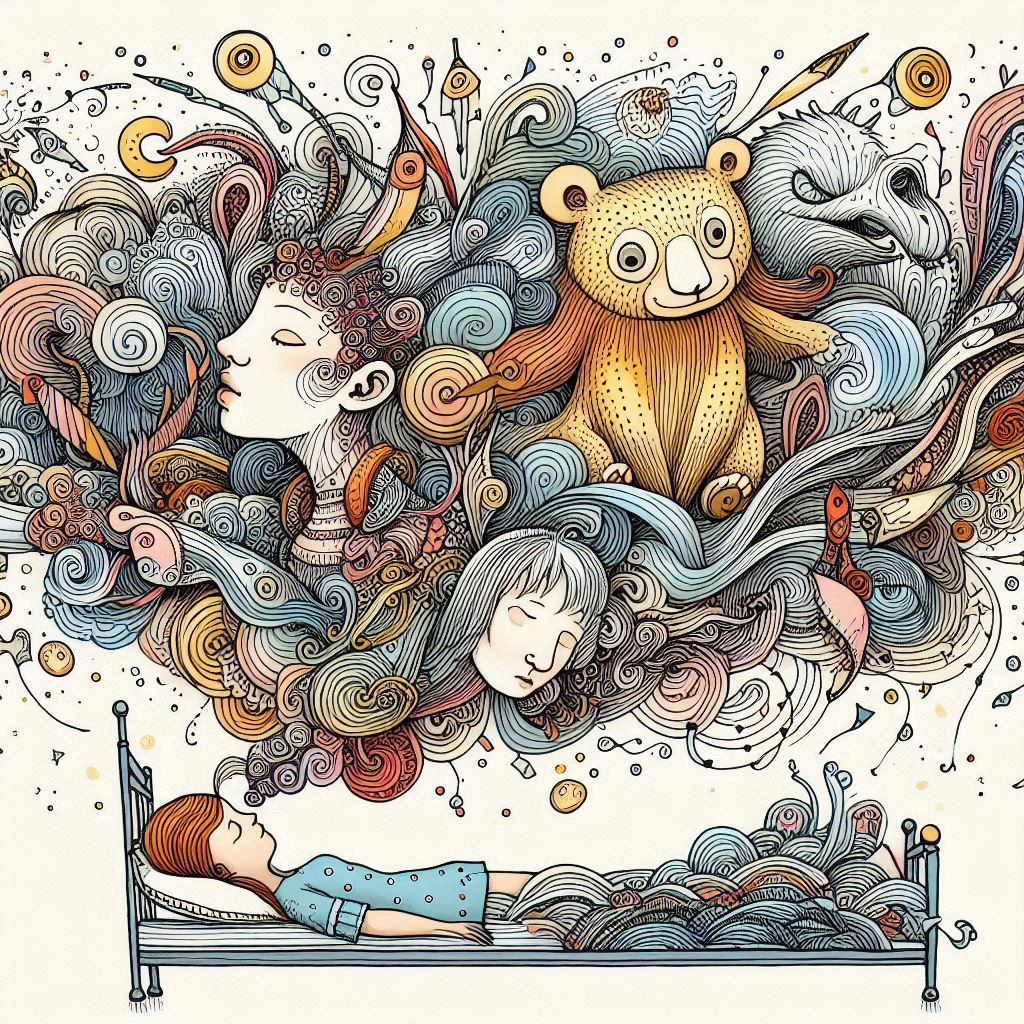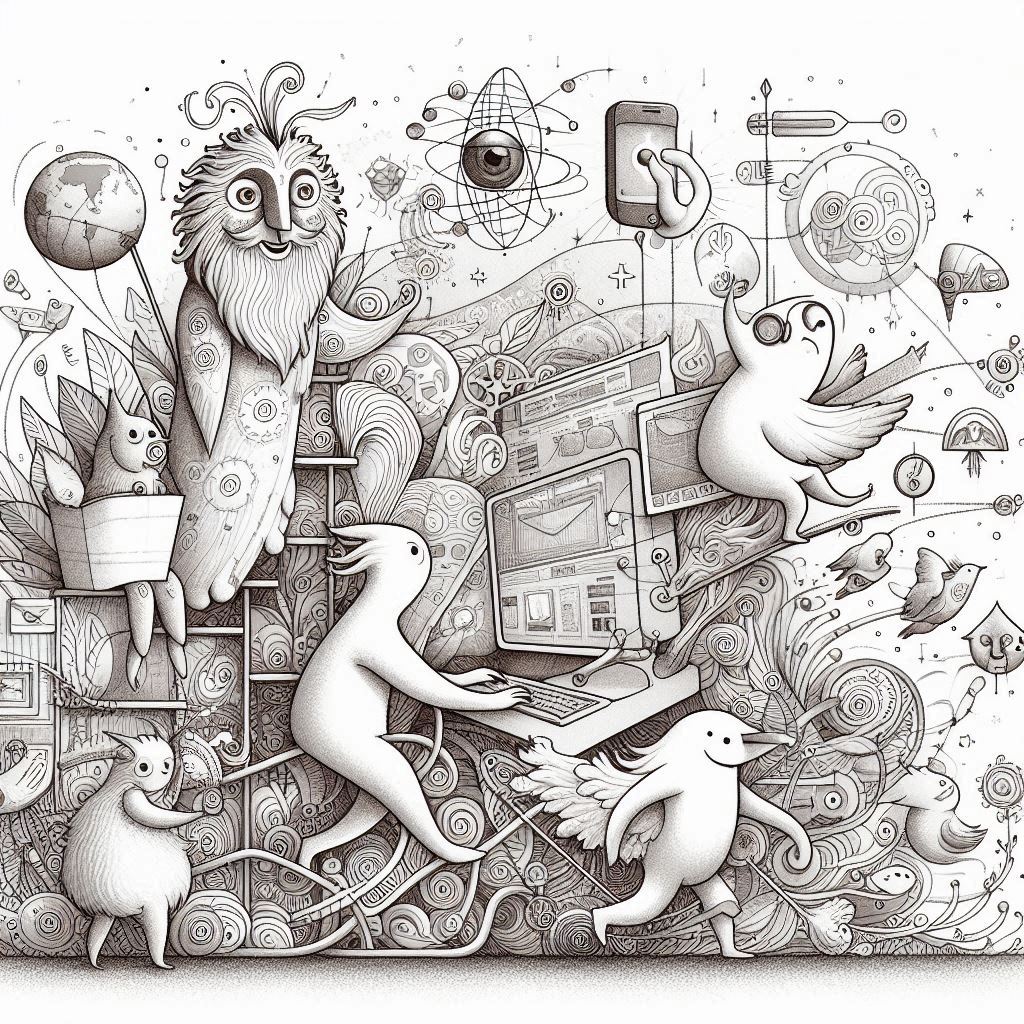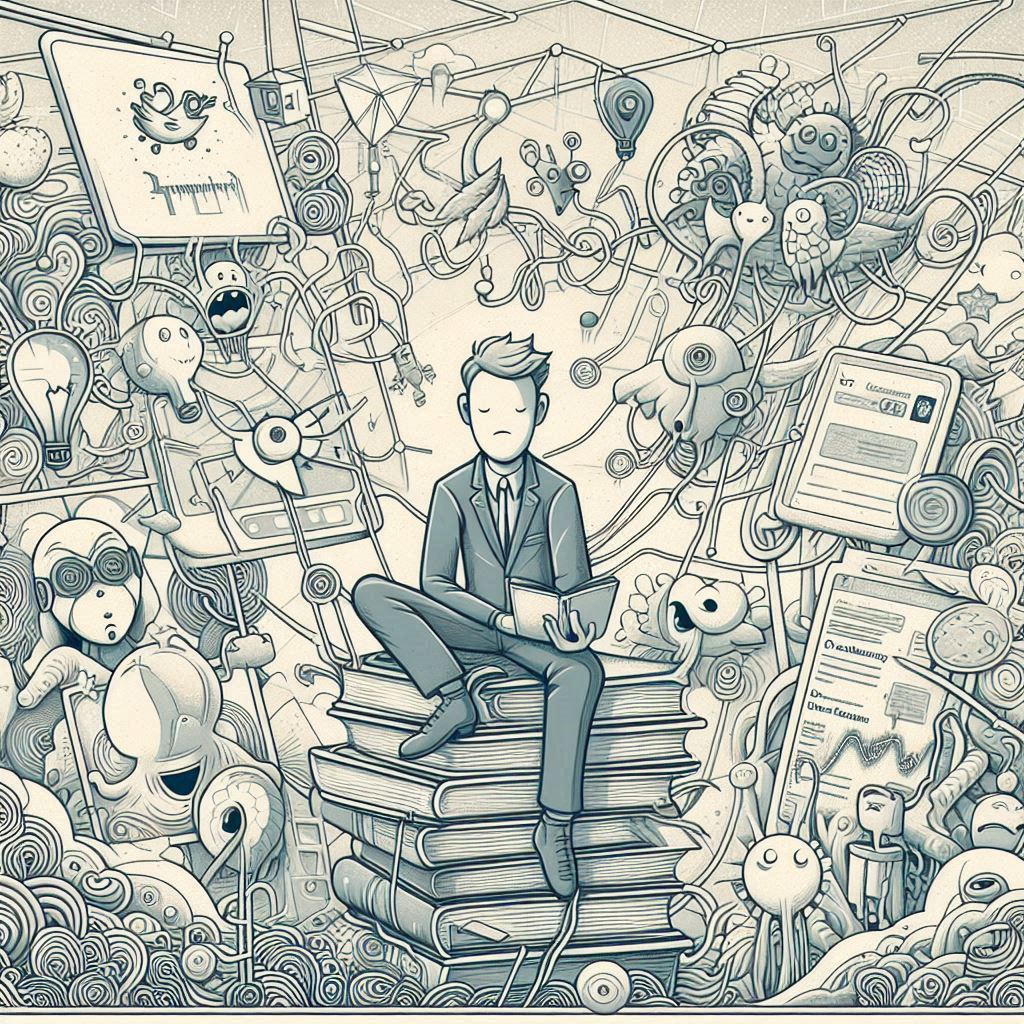It was 01:00 am and I lie awake on my bed. The entire room was dark except for the glow from my mobile screen and a faint light from the lamp. I was scrolling through my X feed looking at the many carefully curated images and replies in my social feed. Many things were on my mind but mainly I was occupied mentally with “post-ing”, “respond-ing” and “react-ing” to each of the images, comments and anything of interest that meets my eyes. I noticed my follower count had increased on one account but I had dropped a couple of followers on my other accounts. The accounts represented different aspects of me, my interests and purpose. I had started from zero on both accounts and gradually built up the follower counts. I went through my carefully selected photos, the witty bio, the posts that show only my best moments, my QTs (quote retweet) of more popular accounts to gain traction, my attempts to participate in the continuous flow of “conversations” on the feed, presenting different aspects of me to the community….how else can I improve the account? I switched from one account to another, from one app to another… I didn’t realise time had passed. I was busy keeping up with and ensuring my online identities remain active and relevant.
Sounds Familiar?

Over 2500 years ago, the Buddha taught that there is no permanent, unchanging self. While many of his contemporaries debated on the nature of a soul, the Buddha proposed that such a permanent, unchanging self simply does not exist. There are two closely related concepts in relation to this: the five aggregates (pañca-khandha) and the five clinging aggregates (pañca-upādāna-khandha) 1.
According to Buddhist philosophy, what we call our “self” is actually a collection of ever-changing physical and mental phenomena. The Five Aggregates (Pañca-khandha) are the basic components that make up our experience of existence. These aggregates describe how we experience the world, moment by moment. The five aggregates are:
-
Form (Rūpa): Our physical body and senses
-
Feelings (Vedanā): Our emotional responses
-
Perceptions (Saññā): How we interpret our experiences
-
Mental Formations (Saṅkhāra): Our thoughts, beliefs, and habits
-
Consciousness (Viññāṇa): Our awareness of the other aggregates
The five clinging aggregates are the same five components, but with an added element of attachment or identification. The term "upādāna" means "fuel" or "clinging". These represent how we typically experience the aggregates - with a sense of "I" and "mine".
An excerpt from the Khanda Sutta (SN 22.48) states:
Whatever form — past, future, or present; internal or external; blatant or subtle; common or sublime; far or near — is clingable, offers sustenance, and is accompanied with mental fermentation: That is called the form clinging-aggregate.
Whatever feeling — past, future, or present; internal or external; blatant or subtle; common or sublime; far or near — is clingable, offers sustenance, and is accompanied with mental fermentation: That is called the feeling clinging-aggregate.
Whatever perception — past, future, or present; internal or external; blatant or subtle; common or sublime; far or near — is clingable, offers sustenance, and is accompanied with mental fermentation: That is called the perception clinging-aggregate.
Whatever (mental) fabrications — past, future, or present; internal or external; blatant or subtle; common or sublime; far or near — are clingable, offer sustenance, and are accompanied with mental fermentation: Those are called the fabrications clinging-aggregate.
Whatever consciousness — past, future, or present; internal or external; blatant or subtle; common or sublime; far or near — is clingable, offers sustenance, and is accompanied with mental fermentation: That is called the consciousness clinging-aggregate.
Let us reimagine the five aggregates for the digital age,
-
Digital Form: Our profile pictures, avatars, and even our devices that are the digital representations of our physical forms.
-
Digital Feelings: The emotions triggered by likes, comments, and online interactions. These digital interactions trigger real emotional responses in us.
-
Digital Perceptions: How we interpret and react to online content. The algorithmic suggestions and curated content that we see. These shape how we perceive the digital world and, by extension, the real world.
-
Digital Mental Formations: Our online habits, beliefs, and digital footprint. Our posts, comments, and shares are the digital manifestations of our thoughts, beliefs, and habits.
-
Digital Consciousness: Our awareness of our online presence and activities. Our user data and metadata is the awareness that platforms have of our digital existence, often more comprehensive than our own self-awareness.
Now, the question that naturally follows would be:
Would our attachment to these Digital Aggregates lead to what we might call "cyber-dukkha" - the unique form of dissatisfaction and stress that comes from our online lives?
In our digital lives, clinging manifests in ways that may feel all too familiar:
-
Clinging to Digital Form: Obsessing over our online image or number of followers
-
Clinging to Digital Feelings: Craving likes and positive comments, avoiding or reacting strongly to criticism
-
Clinging to Digital Perceptions: Believing our curated feeds represent objective reality
-
Clinging to Digital Mental Formations: Strongly identifying with our online opinions and digital habits
-
Clinging to Digital Consciousness: Feeling that our online presence is our true, permanent self
The effort to maintain a consistent, appealing online persona across multiple platforms can be exhausting. We experience "cyber-dukkha" - the unique form of dissatisfaction and stress that comes from our online lives. This mirrors the Buddha's teaching that attachment to a fixed self leads to suffering. The explanation is that while the five aggregates simply describe our experience, it is our clinging to these aggregates as "self" that the Buddha identified as the root of suffering (dukkha) 2. This clinging creates a sense of a fixed, permanent self, which conflicts with the reality of constant change that we observe in both our offline and online lives.

We often believe we're in control of our digital experience, carefully curating our feeds. Yet, algorithms create echo chambers that reinforce our existing views, creating a false sense of a stable, consistent self. We snap a photo, apply filters, and post it online, all in an attempt to capture and present our "self". Platforms offer endless options to customize our profiles, promising unique self-expression. Paradoxically, this abundance of choice often leads to decision paralysis and increased anxiety about presenting our "best" selves. But which self are we referring to? The one that existed at the moment the photo was taken? The idealised version we create through editing? Or the "self" that is seeking validation through likes and comments?
The thing is, each of these "selves" is as fleeting as an Instagram reel. By the time we’ve posted the selfie, our thoughts, feelings, and even our physical form may not the same as they were when we took the photo. Despite our perceived control, algorithms largely determine what content we see and who sees our content. This hidden influence shapes our digital identity in ways we're often unaware of, challenging our notion of an independent self. Our online personas, with their timestamped posts and ever-updating feeds, make this impermanence even more obvious and relatable. By recognising the fluid, ever-changing nature of our "self" - both online and offline - we can perhaps loosen the grip of "cyber-dukkha" and move towards a more liberated way of being.

If you take apart a chariot - remove the wheels, the axle, the body - at what point does it cease to be a chariot? Where exactly is the “chariot-ness”? If we consider this in the context of our digital lives, what is it that constitute our social media persona? Is it the profile, the list of followers, the bio, the timeline posts? At what point does it cease to be us?
The next time you’re about to take a selfie, pause for a moment. Instead of trying to capture your “self,” see if you can capture the beautiful, interconnected moment that you’re a part of. That, perhaps, is the ultimate selfie - one that acknowledges the paradox of trying to capture a self that doesn’t inherently exist yet being fully grounded in the beautiful moment of capturing the essence of that “chan” moment.
Note:
- This post first appeared on https://teknoetics.substack.com
- If you enjoyed this piece please do consider subscribing on substack to support my work. Thanks
| Disclaimer |
|---|
| The content shared on MindPsyche reflects my personal thoughts, experiences, and the discoveries I've made along my own path. It is important to note that they are subjective and may not resonate with everyone. What works for me may not necessarily align with everyone's beliefs or experiences. |
| Many of the images used on this blog are generated using AI based on my prompts. The representation of gender in these images does not imply any specific gender identity and should not be used to generalize. The purpose of these images is to visually enhance the content and not to enforce any stereotypes or assumptions. |
| Please remember that the ideas and concepts discussed here are for informational purposes only and should not be taken as professional advice. Always consult with a qualified expert or professional for any specific concerns or decisions. |
| I also maintain two Substack newsletters: 'TekNoetics' and '1BM (One Breath Moments)' (links in article). If you enjoy the related content here, you might find these newsletters insightful as well. There is a minimal subscription service on Substack to support my work if you wish to contribute. |
| Thank you for visiting MindPsyche and engaging with the content. Your understanding and open-mindedness are appreciated. |
| If at any point you find the need for clarification or wish to share your own insights, I welcome your thoughts. Feel free to reach out to me through any of the provided contact links below |
-
SN 22.48 Khandha Sutta: Aggregates translated from the Pali by Thanissaro Bhikkhu https://www.accesstoinsight.org/tipitaka/sn/sn22/sn22.048.than.html ↩
-
Five Piles of Bricks: The Khandhas as Burden & Path by Thanissaro Bhikkhu https://www.accesstoinsight.org/lib/authors/thanissaro/khandha.html ↩